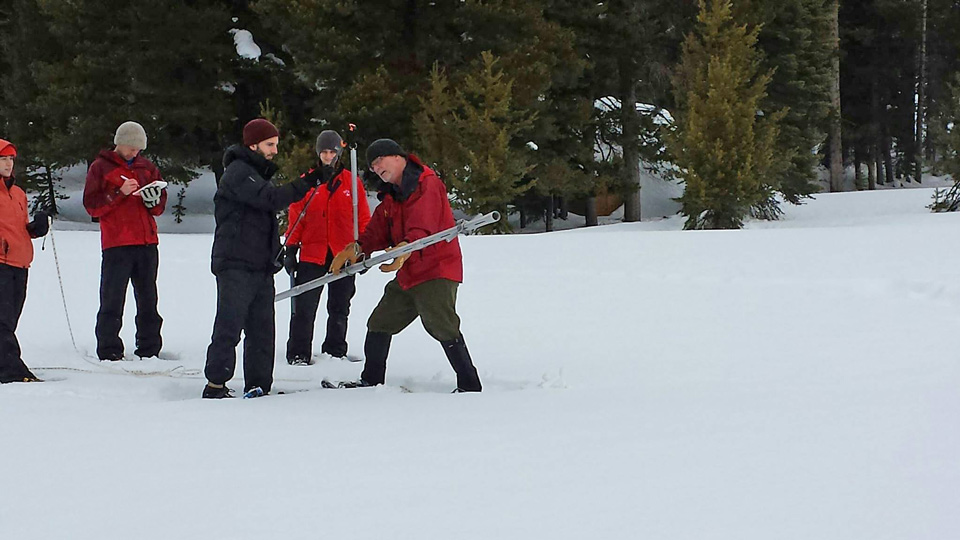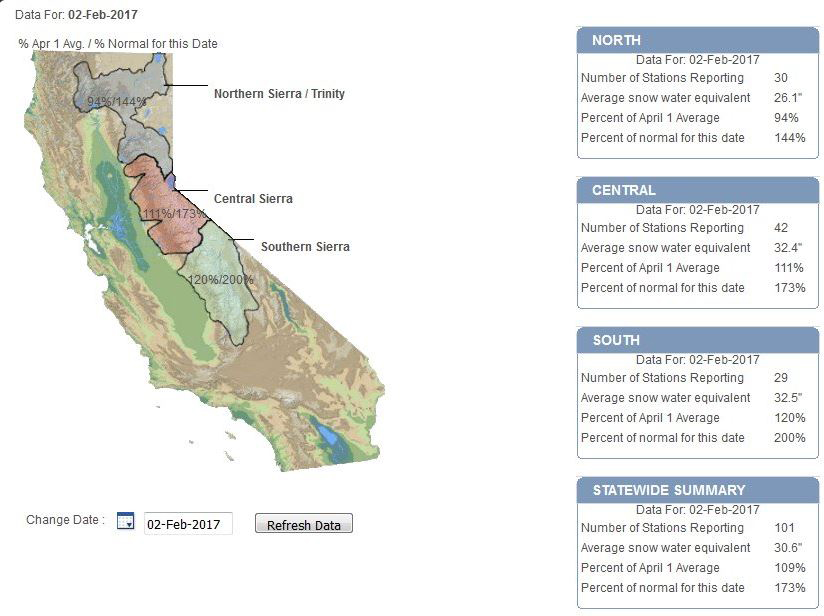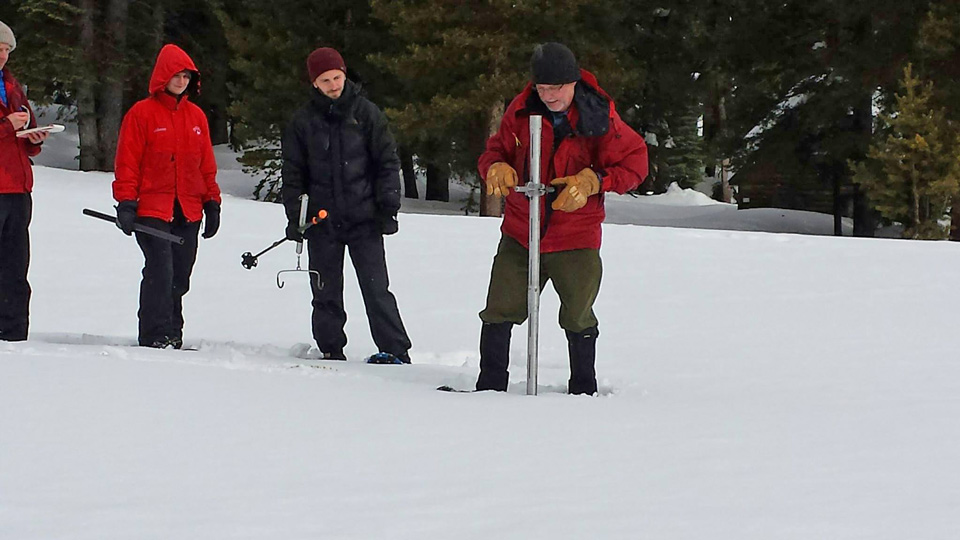
Frank Gehrke, chief of the California Cooperative Snow Surveys Program, conducted the second survey of 2017 during February
Credit: DWR
February 2, 2017 - SACRAMENTO – Today’s Department of Water Resources (DWR) manual snow survey at Phillips Station in the Sierra Nevada range found a snow water equivalence of 28.1 inches, a significant increase since the January 3 survey, when just 6 inches was found there. The average as measured at Phillips since 1964 is 18.4 inches.
Snow water equivalence is the depth of water that theoretically would result if the entire snowpack melted instantaneously. That measurement is more important than depth in evaluating the status of the snowpack. On average, the snowpack supplies about 30 percent of California’s water needs as it melts in the spring and early summer.
More telling than a survey at a single location, however, are DWR’s electronic readings today from 101 stations scattered throughout the Sierra Nevada. Statewide, the snowpack holds 31 inches of water equivalent, or 173 percent of the February 2 average (18.1 inches). On January 1 before a series of January storms, the snow water equivalent (SWE) of the statewide snowpack was 6.5 inches, just 64 percent of the New Year’s Day average.
Measurements indicate the water content of the northern Sierra snowpack is 26 inches, 144 percent of the multi-decade average for the date. The central and southern Sierra readings are 32 inches (173 percent of average) and 32 inches (200 percent of average) respectively.
The Phillips snow course, which is near the intersection of Highway 50 and Sierra-atTahoe Road, is one of hundreds that will be surveyed manually throughout the winter. Manual measurements augment the electronic readings from more than 100 sensors in the state’s mountains that provide a current snapshot of the water content in the snowpack.
Frank Gehrke, chief of the California Cooperative Snow Surveys Program, conducted today’s survey at Phillips and reported that “we’ve got a very good snowpack, a very robust snowpack on the ground right now.”

The first four months of Water Year 2017 (October 1 to today) were wet due to atmospheric river storms and rainfall from lesser storms that drenched the state. All three regions DWR monitors continuously for their rainfall had recorded more by January 23 than their annual averages for the entire water year, which runs from October 1 through September 30:
• The average annual precipitation at the eight-station Northern California index is 50 inches; that total was surpassed on January 20, 112 days into Water Year 2017. Water Year 1997 had more rain in the region during the October-throughJanuary period (58.22 inches) than during the same period this water year (53.2 inches).
• The San Joaquin Basin rainfall total today is 204 percent of average for the date.
• Tulare Basin rainfall is 207 percent of average for the date.
Shasta Lake, California’s largest surface reservoir now holds 114 percent of its historical average on today’s date. One year ago, Shasta’s storage was just 78 percent of its February 2 average. Similarly, Lake Oroville, the State Water Project’s largest reservoir, holds much more water today than a year ago – 121 percent of its historical average today compared to just 68 percent one year ago.
Although this year, so far, is exceptionally wet, storms can cease. For example, after the previous drought declaration was ended in March 2011 – and the arrival of some storms in November and December 2012 – severe drought returned, leading to the driest four year period (and some of the warmest years) in California’s history.
“In the last 10 water years, eight have been dry, one wet, one average,” said State Climatologist Mike Anderson. “Hopefully this year will end up being wet, but we cannot say whether it will be one wet year in another string of dry ones.”
Many Californians continue to experience the effects of drought and a number of Central Valley communities still depend on water tanks and bottled water. Lake Cachuma in Santa Barbara County is at just 12 percent capacity, and groundwater – source of at least a third of the supplies Californians use – will take much more than a few storms to be replenished in many areas.
California’s climate is the most variable of any state. Historically, it swings from drought to flood and back to drought, and climate change is intensifying those. In addition, as global warming drives up average temperatures in California more precipitation will fall as rain, not snow stored in the Sierra Nevada and other mountains. To help prepare for these ever-wider extremes, Californians should be making conservation a way of life.

Frank Gehrke, chief of the California Cooperative Snow Surveys Program, conducted the second survey of 2017 during February
Credit: DWR
Source: DWR








